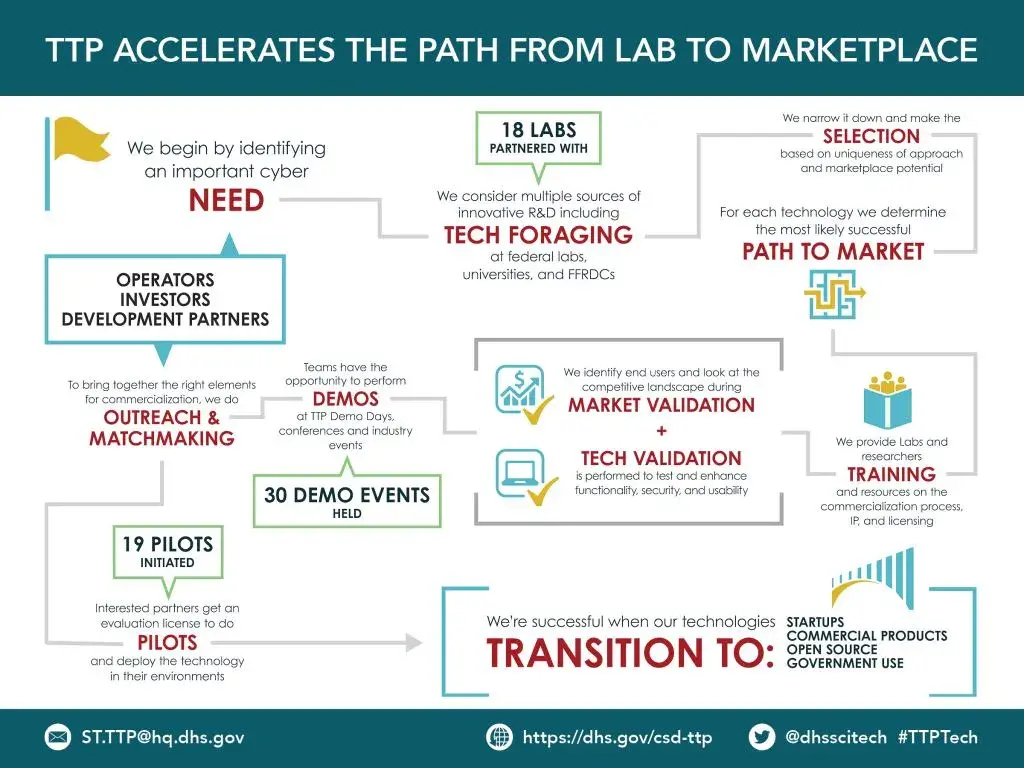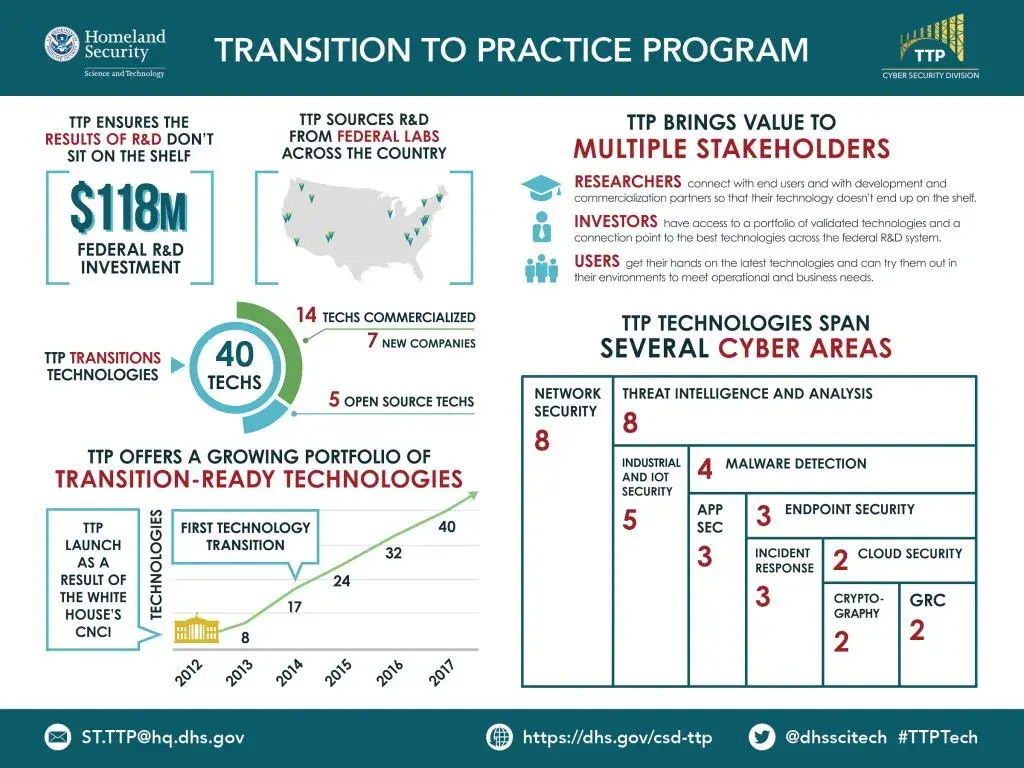 The Transition to Practice (TTP) program bridges the gap between research and the marketplace by connecting federal R&D sources with the private sector and investors to accelerate commercialization. The TTP program leads the successful transition of federally funded cybersecurity technologies through an efficient transition process that has a lasting impact on the R&D ecosystem and has resulted in the commercialization of more than a dozen technologies and the creation of several new startups.
The Transition to Practice (TTP) program bridges the gap between research and the marketplace by connecting federal R&D sources with the private sector and investors to accelerate commercialization. The TTP program leads the successful transition of federally funded cybersecurity technologies through an efficient transition process that has a lasting impact on the R&D ecosystem and has resulted in the commercialization of more than a dozen technologies and the creation of several new startups.
Every year, TTP conducts tech foraging to identify promising cybersecurity technologies from several sources of federally-funded R&D, including Department of Energy National Labs, Department of Defense Affiliated Labs, Federally Funded Research and Development Centers (FFRDC), University Affiliated Research Centers, and universities. Approximately eight new technologies are selected each year. The TTP transition process includes training, market validation, testing and evaluation, pilot deployments, and outreach. Technologies are introduced to potential partners, investors, and integrators, and showcased at a national series of Technology Demonstration Days. TTP supports multiple paths to transition, including open source, licensing, startups, adoption by cyber operators, and government use.


